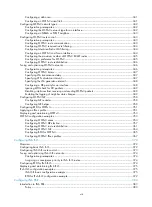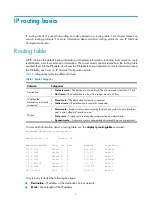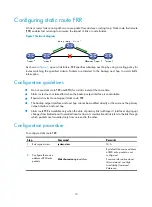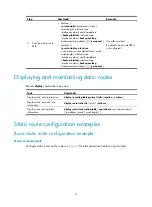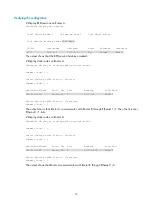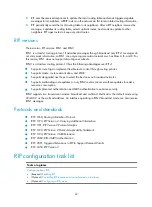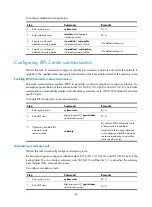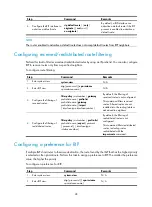
13
Summary Count : 2
Static Routing table Status : <Active>
Summary Count : 2
Destination/Mask Proto Pre Cost NextHop Interface
1.1.2.0/24 Static 60 0 1.1.4.1 Eth1/1
1.1.3.0/24 Static 60 0 1.1.5.6 Eth1/2
Static Routing table Status : <Inactive>
Summary Count : 0
# Use the
ping
command on Host B to test the reachability of Host A (Windows XP runs on the two hosts).
C:\Documents and Settings\Administrator>ping 1.1.2.2
Pinging 1.1.2.2 with 32 bytes of data:
Reply from 1.1.2.2: bytes=32 time=1ms TTL=126
Reply from 1.1.2.2: bytes=32 time=1ms TTL=126
Reply from 1.1.2.2: bytes=32 time=1ms TTL=126
Reply from 1.1.2.2: bytes=32 time=1ms TTL=126
Ping statistics for 1.1.2.2:
Packets: Sent = 4, Received = 4, Lost = 0 (0% loss),
Approximate round trip times in milli-seconds:
Minimum = 1ms, Maximum = 1ms, Average = 1ms
# Use the
tracert
command on Host B to test the reachability of Host A.
C:\Documents and Settings\Administrator>tracert 1.1.2.2
Tracing route to 1.1.2.2 over a maximum of 30 hops
1 <1 ms <1 ms <1 ms 1.1.6.1
2 <1 ms <1 ms <1 ms 1.1.4.1
3 1 ms <1 ms <1 ms 1.1.2.2
Trace complete.
BFD for static routes configuration example (direct next hop)
Network requirements
, configure a static route to subnet 120.1.1.0/24 on Router A, and configure a static route to
subnet 121.1.1.0/24 on Router B. Enable BFD for both routes. Configure a static route to subnet
120.1.1.0/24 and a static route to subnet 121.1.1.0/24 on Router C. When the link between Router A and
Router B through the Layer 2 switch fails, BFD can detect the failure immediately and inform Router A and
Router B to communicate through Router C.

